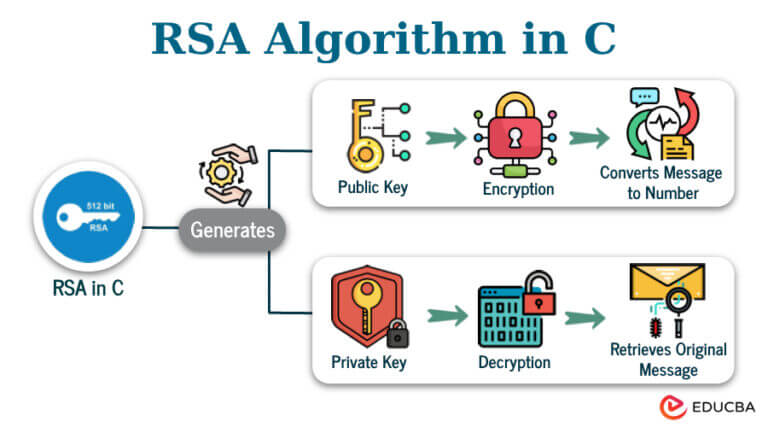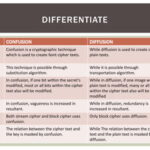In the labyrinth of modern cryptography, where the shadows of digital threats loom larger every day, the RSA algorithm stands as a venerable sentinel, a bastion of security that has withstood the test of time. To explore the relevance of learning RSA in contemporary cryptographic practice is to delve into a rich tapestry woven from threads of history, mathematics, and pressing security concerns. This discourse aims to unravel why the RSA algorithm remains not only significant but profoundly instructive for aspiring cryptographers.
The RSA algorithm, formulated in the late 1970s, epitomizes a paradigm shift in secure communications. It was not merely an advancement in algorithmic design; it marked the advent of public-key cryptography, enabling secure data exchange in a landscape where entities could remain anonymous yet authenticated. Much like the invention of the wheel revolutionized transportation, RSA revolutionized the way information is safeguarded in the digital realm.
At its core, the RSA algorithm operates on the mathematical properties of prime numbers, much like a skilled artisan who transforms raw materials into intricate works of art. The process begins with the selection of two large prime numbers, “p” and “q,” whose product forms the backbone of encryption and decryption keys. This riveting relationship entre nous between prime numbers is not simply academic; it is foundational, forming the bedrock upon which secure communications are built. As a cryptographer learns the intricacies of RSA, they partake in an intellectual adventure where elementary number theory blossoms into a sophisticated understanding of encryption.
While contemporary algorithms like Elliptic Curve Cryptography (ECC) have emerged, championing efficiency, RSA retains its unique appeal due to its mathematical transparency. Learning RSA equips modern cryptographers with an essential toolkit, akin to a blacksmith wielding various hammers. The ability to comprehend how RSA operates, even as newer algorithms dominate the landscape, is invaluable. The transparency of RSA’s mechanisms provides insight into the vulnerabilities and potential exploits of public-key systems, a vital awareness as the frequency and complexity of cyberattacks increase.
Moreover, RSA serves as a pedagogical bridge to understanding more complex cryptographic concepts. Its structured approach is akin to learning the scales before venturing into symphonic compositions. Concepts such as asymmetric encryption, digital signatures, and even advanced protocol design, find their roots in fundamental RSA principles. The prospect of grappling with such a foundational algorithm fosters analytical thinking and cultivates a mindset attuned to the nuances of cryptographic design.
However, the inquiry into whether learning RSA is still worth the effort invites consideration of contemporary challenges. The exponential growth of computational power poses a formidable adversary to RSA’s longevity. As quantum computers loom on the horizon, threatening to unravel the very fabric of RSA’s security, leaders in cryptography must grapple with the implications of these developments. Yet, the very challenge presented by quantum computing enhances the necessity for cryptographic literacy. Learning RSA becomes not only an exploration of existing methodologies but also forms a crucial lens through which the cryptographer can assess future threats and devise countermeasures.
Intriguingly, RSA also embodies the art of balance between security and accessibility. The algorithm’s reliance on large prime numbers highlights a delicate interplay: while the security it affords is contingent upon the difficulty of prime factorization, the practicalities of key size illustrate a trade-off with performance. This tension embodies a microcosmic reflection of the larger cryptographic landscape: as systems strive for robustness, they must also reckon with implementation challenges. Thus, proficiency in RSA equips scholars with the nuances required to navigate this complex terrain effectively.
The RSA algorithm’s relevance extends beyond mere academic inquiry; it resonates deeply within professional spheres. Industries across the spectrum—banking, healthcare, and data privacy—continue to integrate RSA in their protocols, perpetuating its status as a cryptographic workhorse. The understanding of RSA is intrinsically tied to grasping the architecture of secure systems, thereby empowering cryptographers to safeguard sensitive information against the tide of increasingly sophisticated cyber threats.
Furthermore, RSA’s emblematic status within the cryptographic community fosters collaboration and shared knowledge. Participating in discourse surrounding RSA opens avenues for engagement with fellow practitioners and enthusiasts, thereby weaving a network of collective expertise. This camaraderie can lead to collaborative innovations that transcend individual contributions, mirroring the collaborative dynamics of scientific discovery.
In summary, learning the RSA algorithm transcends mere acquisition of knowledge; it is an expedition into the heart of cryptographic practice, replete with historical significance and contemporary relevance. The intricate interplay of its mathematical foundations, practical applications, and its forecast of future challenges provides a multifaceted understanding of the cryptographic domain. As new threats emerge and techniques evolve, the lessons gleaned from RSA illuminate pathways for innovation. Ultimately, for modern cryptographers, the undertaking of mastering RSA is not merely an academic pursuit but an indispensable venture into the complex symphony of safeguarding our digital world.









Leave a Comment